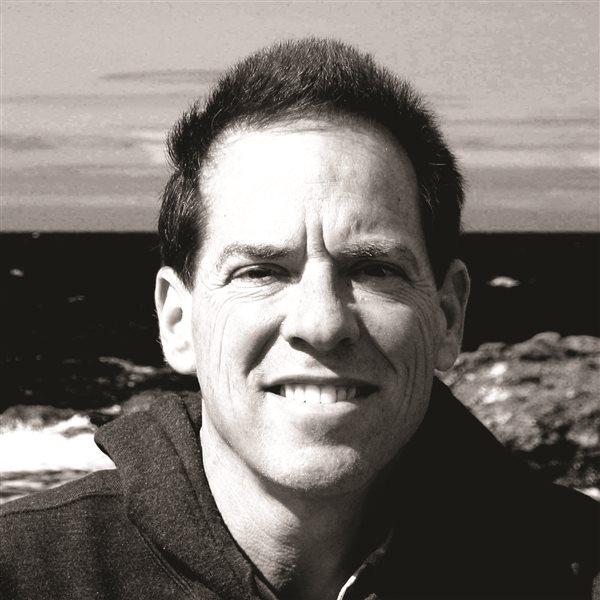
"Only 14 starts left before she gets a hot section,” explained mechanic Russ Monroe, patting the scarlet engine housing of a Bell 407 helicopter. He spoke with gravity, as might a heart surgeon contemplating surgery.
Russ used to work on the Flying Carpet. I remember him excitedly regaling me at the maintenance hangar about a new and better method he’d found to set magneto timing for the engine. Another time, he delighted in discovering that the airplane had 500 hours on her vacuum pump, “and since this has been a light annual inspection, it might be a good time to preventatively replace it.”
Russ enjoyed other careers before earning his aircraft and powerplant mechanic’s certificate, first in the U.S. Navy and later as a radio broadcaster. He’s a wealth of knowledge on many topics, so we’ve always enjoyed talking airplanes—or anything else. Then Russ left Flagstaff for a position as a roving helicopter mechanic. When I learned he was temporarily stationed in Kingman, I decided to visit him.
It’s “monsoon season” in Arizona, meaning a daily threat of afternoon thunderstorms. So I picked a day when Jean had an early commercial flight and, after dropping her at the airline terminal, took flight for Kingman. Departing at 6:30 a.m., I figured I had until at least midday before thunderstorms threatened. That optimism faded when I noted rainshowers over Las Vegas; then pilot reports directed my attention to an isolated but massive storm cell near Parker, southwest of Kingman. Neither was an immediate threat, but at this early hour they were harbingers of more to come.
Steering west out of Flagstaff along old Route 66, I roughly traced the Mother Road for an hour to Kingman. Rows of mothballed jetliners filled my windshield as I turned final to land at the remote former World War II Army Air Forces base. Russ waited, grinning, as I taxied in and marshaled me into a tiedown.
“How’s the ol’ Flying Carpet?” he asked, affectionately stroking her cowl. Having once lovingly cared for this airplane, he inquired of her health as he might a long-unseen relative. “Saw another plane I used to work on last week,” he added, quoting the N-number, “a Piper Lance belonging to a doctor who worked the ‘Rez.’ That airplane had a rough life. We were always cleaning tar and dirt off the landing gear from operating into oiled runways, and one time I found a gopher snake under the pilot seat!”
Noting Russ’s recollection of the N-number over the owner’s name, I joked that my friend might be more excited to see the Flying Carpet than to see me. But there’s no jealousy here—love for an airplane is something I’ll happily share with mechanics. It’s all part of the bond among pilots, airplanes, and the good folks who keep ’em flying.
That got us discussing how mechanics love their work as much as pilots do. To illustrate that passion, Russ asked if I knew who’s pictured on FAA mechanic’s certificates. I did not.
“You know how Orville and Wilbur appear on the back of your pilot’s licenses? Well, the Wrights’ mechanic, Charles Taylor, appears on mine!”
High among the Wrights’ innovations to achieve powered flight was installing the first engine with an adequate power-to-weight ratio to lift a heavier-than-air machine. Charles Taylor built that engine from scratch—an amazing feat in 1903—and it’s doubtful the Wright Flyer could have realized its name without his contribution.
Russ showed me around the medical helicopter he was servicing, including its articulated litter door and specialized medical equipment, and offered a tour of his tiny airport workshop. Then, while he finished paperwork, I explored Kingman’s crowded ramp.
Among mothballed airline jets, I discovered a giant Russian Antonov AN-2 biplane and, better yet, a pair of vintage Beechcraft Twin Bonanzas—one pristine and the other engineless. My dad’s friend Eddie Hayes owned a Twin Bonanza featuring three-and-three seating in its cavernous interior; as a child I relished riding between the two pilots in the front bench seat. Few Twin Bonanzas survive, but the model’s beefy landing gear evolved to serve the popular King Air turboprop series.
Noting buildups to the east, I said goodbye and hurried aloft. Sure enough, my datalink-weather screen soon populated with two huge elongated cells spanning the midpoint of my route, between military airspace to the south and the Grand Canyon to the north. Thankfully, the one gap near Seligman remained open for 20 minutes until I got there.
Sighing relief, I relived the morning’s pleasures while steering homeward under clear skies. Shortly before I’d left Kingman, an air ambulance crew had arrived at the airport to take possession of the helicopter.
“Remember,” Russ told the pilot after introductions, “only 14 more starts are allowed until this baby gets a hot section. The replacement components shipped yesterday!” Smiling at the thought of Russ’s unflagging dedication, I patted the Flying Carpet’s glareshield.
“You know, old girl,” I said, “we’re not alone up here.”



